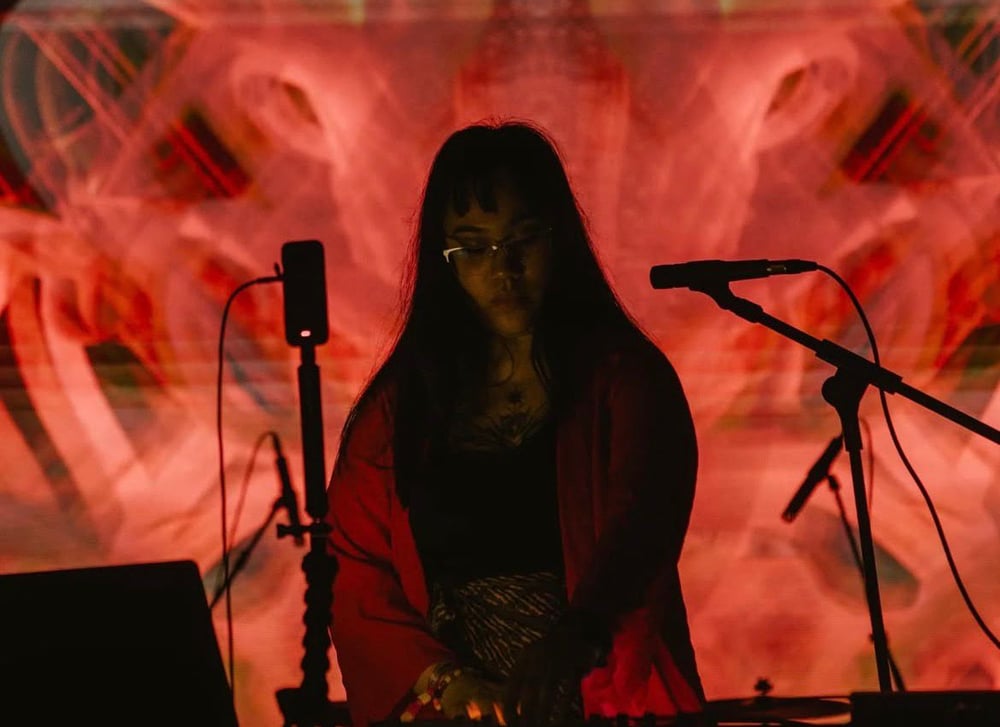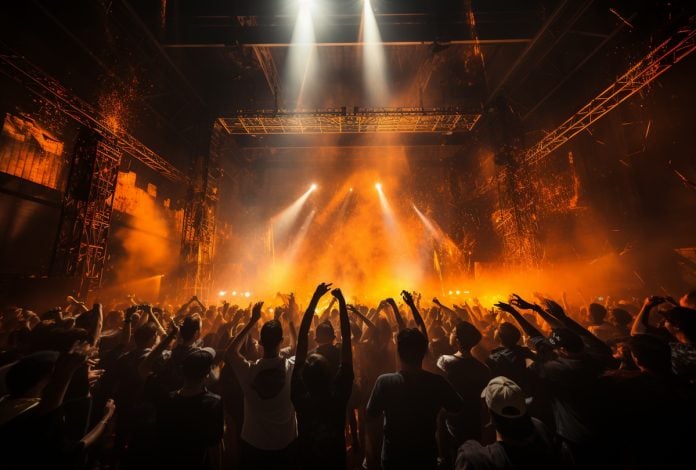Beneath the city’s glossy skyline, a new rhythm is taking over darker, heavier and more hypnotic. It is the sound of techno, a genre once hidden deep in underground warehouses but now slowly becoming the heartbeat of a new creative generation.
From makeshift spaces in RexKL to curated nights at independent venues, techno has become the gathering ground for Malaysia’s growing subculture of ravers, producers and dreamers. For many, it is not just about music but about belonging.
One of the faces is this movement is Victoria Yam, known on stage as rEmPiT g0dDe$$, a DJ, producer and multidisciplinary artist whose sets blend industrial textures with emotional resonance.
“My sound draws from industrial and dub influences, reimagined through a Southeast Asian lens. I like things that sound heavy, emotional and alive,” she told theSun.

Finding a new rhythm
Techno is a form of electronic music that emerged from Detroit in the 1980s. Built on repetition, rhythm and atmosphere, it values texture over melody and emotion over spectacle. In cities like Berlin, Amsterdam and Tokyo, it has long been the soundtrack of counterculture.
Now, that same energy is finding a home in Kuala Lumpur though with its own Southeast Asian twist.
With rave events popping up every weekend, like the two-day music festival Transmission and Hardtech that took place on (Oct 18 and Oct 19, 2025) or even underground raves at secluded warehouses around Kuala Lumpur, the wave of its popularity is undeniable.
Victoria, who began producing her own music on SoundCloud, often draws from the sounds of her surroundings. “My earlier releases explored KTV-inspired sounds, while my recent works dive deeper into Southeast Asian tunings, rhythms and soundscapes. I like translating familiar cultural textures into something experimental yet grounded in where I come from,” she said.
That grounding, she said, is what gives Malaysian techno its unique edge. Beneath the global influences lies a soundscape shaped by humidity, noise and nostalgia, the elements that make the scene here distinctively local.
Challenges of the underground
Yet, carving out a career in this space is not without challenges. “The biggest challenge is sustainability. I often take on side projects like sound installations and theatre performances,” Victoria admitted.
Her multidisciplinary works have taken her beyond the club. She has collaborated with light artist Jun Ong for Imaginarium during Merdeka at The Gardens Mall, reimagined traditional Wayang Kulit through a feminist lens in Wayang Women at RexKL and is currently preparing for an upcoming piece at Singapore’s National Gallery.
“Touring and performing internationally is fulfilling, but it’s also financially straining. The opportunities are often seasonal, and while performing at major festivals in Europe has been an incredible experience, the economic realities from exchange rates to living costs make it difficult to sustain as a full-time career,” she said.
Her story reflects a larger truth about the scene and that passion drives it more than profit. Many artists juggle side jobs, freelance projects or creative collaborations to sustain their craft. Yet, they persist for the love of music and the sense of community it brings.
Techno as a form of connection
To Victoria, techno is more than a genre. It is a form of survival and expression.
“Techno and underground spaces have always been sanctuaries places for expression, connection and freedom. The rave taught me kindness and community. It’s where I found my chosen family. In a world that keeps shifting beneath us, techno becomes a form of survival a way to breathe, to live, to reclaim our sense of self. With balance, it becomes healing,” she said.
That emotional connection is what draws many Malaysians to the genre.
For 27-year-old raver Natasha Razip, the experience is deeply personal. “When you’re on the dance floor, there’s no judgment. You just move with the music and feel free. It’s like therapy. There’s a sense of respect in the crowd. Everyone’s there for the same reason to lose themselves in the sound,” she said.
This idea of togetherness echoes across the city’s underground. The dance floor becomes a space where people of different backgrounds, genders, and identities gather, united by rhythm and release.

Digital tools and creative ecosystems
The digital age has helped amplify that sense of connection.
“Streaming and social media have made visibility and access possible. Independent artists now have the power to share their work directly, build communities across borders, and connect with audiences who genuinely care about what they create,” Victoria said.
Through Align.Online, a digital platform she co-founded with sound artist Lynn Nandar Htoo, Victoria helps spotlight Southeast Asian women in sound and cultural practices.
“Our goal is to create pathways for visibility, access and long-term sustainability without relying on institutional validation,” she said.
For her, this is part of a larger vision to redefine what creative work looks like in the region.
“Why can’t musical artistes do music full-time? We innovate, problem-solve and build ecosystems the same way engineers or designers do. It’s time the creative industry recognised that kind of labour and intelligence as equally vital,” she said.
A community built on care
The rise of techno in Malaysia has also brought renewed conversations about inclusivity and safety within nightlife culture.
“The underground has always been inclusive, it’s built on care and community. But as the world grows more, inclusivity isn’t just a value, it’s a necessity. Beyond underground spaces, people are actively pushing for safer, kinder environments. We’re learning to be better for each other,” Victoria said.
Ravers in the community are also known to practice the act of PLUR, which stands for “peace, love, unity and respect” to maintain a compassion-driven philosophy and peaceful music scene. The dance floor is no longer just a place for escape, it is a shared space for belonging.
The future of the scene
Looking ahead, Victoria said the local scene is expanding with momentum and care.
“Beyond techno, artists are building collectives that center community, experimentation, and regional connection,” she said.
She cited Huru Hara, a dub-focused movement led by Malaysian DJ Mia and Singaporean DJ Tashasan, as an example of Southeast Asian collaboration led by women.
“The scene is growing with intention. People aren’t just playing gigs, they’re building ecosystems that will outlast trends,” she said.
When asked to describe Malaysia’s techno scene in one word, Victoria simply answered with “gratitude”.
“To the communities, promoters and DJs who continue to build the scene from the ground up. The underground has always been about care, resistance and collective survival and it’s the people working quietly behind the curtain who keep that spirit alive,” she said.
Beyond the bass
As night stretches into morning and the last beat fades into silence, the echoes of KL’s techno scene remain pulsing through conversations, collectives and collaborations.
It is not just about the music. It is about care, connection and the courage to create something lasting.
“Be yourself and keep building with curiosity and care. Passion starts the fire but structure keeps the community and the music alive,” Victoria’s words for aspiring DJ’s.










